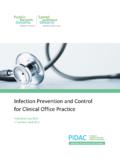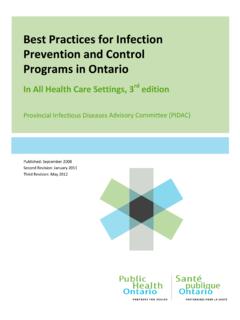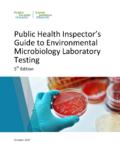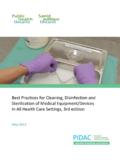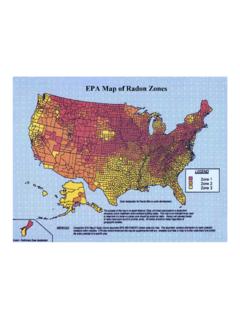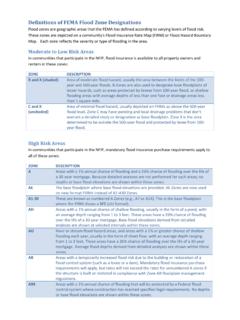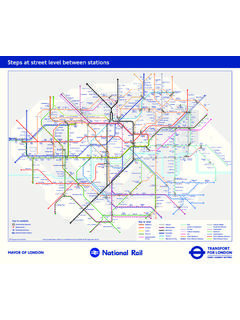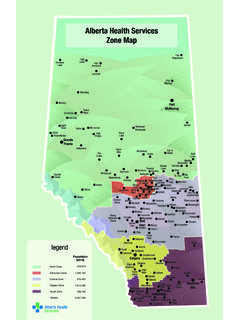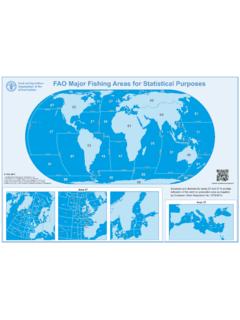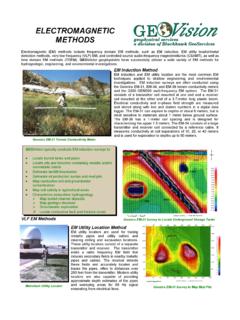Transcription of Ontario Lyme Disease Estimated Risk Areas map: 2018
1 Purpose of Lyme Disease Estimated risk Areas map The Ontario Lyme Disease Map: Estimated Risk Areas is updated annually. The purpose of the map is to assist local public health units as they conduct Lyme Disease case investigations. Public health professionals Public health professionals can also use the map to determine if reported case exposure locations represent known or potentially emerging risk Areas . This will then help to inform public health messages aiming to raise awareness of Lyme Disease risk Areas in Ontario . Clinicians The map provides clinicians with background information on Estimated risk Areas when taking into account potential exposures or tick bites.
2 This can help with a decision to pursue testing and/or treatment. Estimated risk Areas : Definition and methods for identification Definition Estimated risk Areas are locations where blacklegged ticks have been identified or are known to occur and where humans have the potential to come into contact with infected ticks. Estimated risk Areas are calculated as a 20 km radius from the centre of a location where blacklegged ticks were found through drag sampling. This is based on work done in Nova Scotia and adopted by the Public Health Agency of Canada for its Lyme Disease risk ,2 Method An Estimated Lyme Disease risk area in Ontario is determined by methods described in Assessment of a screening test to identify Lyme Disease risk, by Ogden et al.
3 3 Initially, passive surveillance indicators are required to establish an Estimated risk area, and are used to inform where tick dragging should be conducted. Passive surveillance indicators may include, but are not limited to: Information about ticks submitted for identification and/or testing for the Lyme Disease bacteria. Blacklegged ticks feed on and are transported by migratory birds, meaning there is a possibility of encountering an infective blacklegged tick almost anywhere in Ontario . Ontario Lyme Disease Risk Ma p 2018: Estimated Risk Areas 1 Assessment of exposure information from locally acquired human Lyme Disease cases. Information from health care professionals.
4 A suitable tick habitat. Once passive surveillance indicators are present, tick dragging should take place. Ogden et al. methods require conducting three person-hours of drag sampling in potential risk Areas between May and October. In new locations with no history of blacklegged tick populations, tick dragging should be conducted at two different times in a one year period (spring and fall) to confirm the presence of the blacklegged ticks. Finding at least one blacklegged tick (Ixodes scapularis) during this time period may indicate a possible risk area for Lyme Disease . The habitat and host animal species required for tick establishment and Lyme Disease transmission are not uniform within the Estimated risk Areas indicated on the map in yellow.
5 Ticks require wooded and brushy Areas to establish themselves. Therefore, if there are no wooded or brushy Areas present within a section of the indicated risk area (for example, a parking lot), it is expected that blacklegged ticks will not be present. Ontario Lyme Disease Risk Ma p 2018: Estimated Risk Areas 2 Public Health Unit Codes Health Unit Code Health Unit ALG Algoma District BRN Brant County CHK Chatham-Kent DUR Durham Regional ELG Elgin-St. Thomas EOH Eastern Ontario GBO Grey Bruce HAL Halton Regional HAM Hamilton HDN Haldimand-Norfolk HKP Haliburton-Kawartha-Pine Ridge District HPE Hastings and Prince Edward Counties HUR Huron County KFL Kingston-Frontenac and Lennox and Addington LAM Lambton LGL Leeds-Grenville and Lanark District MSL Middlesex-London NIA Niagara Regional Area NPS North Bay Parry Sound District NWR Northwestern OTT Ottawa OXF Oxford County PEE Peel Regional PDH Perth District PQP Porcupine PTC Peterborough County-City REN Renfrew County and District SMD Simcoe Muskoka District SUD Sudbury and District THB Thunder Bay District TOR Toronto TSK Timiskaming WAT Waterloo WEC Windsor-Essex County WDG
6 Wellington-Dufferin-Guel ph YRK York Regional Ontario Lyme Disease Risk Ma p 2018: Estimated Risk Areas 3 References 1. Nova Scotia. Department of Health and Wellness. Lyme Disease : a report on Lyme Disease epidemiology and surveillance in Nova Scotia [Internet]. Halifax, NS: Nova Scotia. Department of Health and Wellness; 2012 [cited 2018 Mar 19]. Available from: th/ document s/Lyme- Disease -Epi de 2. Government of Canada. Risk of Lyme Disease to Canadians [Internet]. Ottawa, ON: Government of Canada; 2017 [cited 2018 Mar 19]. Available from: 3. Ogden NH, Koffi JK, Lindsay LR. Assessment of a screening test to identify Lyme Disease risk. Can Commun Dis Rep. 2014;40(5):83-7. Available from: Suggested Citation Ontario Agency for Health Protection and Promotion (Public Health Ontario ).
7 Ontario Lyme Disease map 2018: Estimated risk Areas . Toronto, ON: Queen s Printer for Ontario ; 2018. For more information, visit Disclaimer This document was developed by Public Health Ontario (PHO). PHO provides scientific and technical advice to Ontario s government, public health organizations and health care providers. PHO s work is guided by the current best available evidence. PHO assumes no responsibility for the results of the use of this document by anyone. This document may be reproduced without permission for non-commercial purposes only and provided that appropriate credit is given to Public Health Ontario . No changes and/or modifications may be made to this document without explicit written permission from Public Health Ontario .
8 Public Health Ontario acknowledges the financial support of the Ontario Government. Ontario Lyme Disease Risk Ma p 2018: Estimated Risk Areas 4

